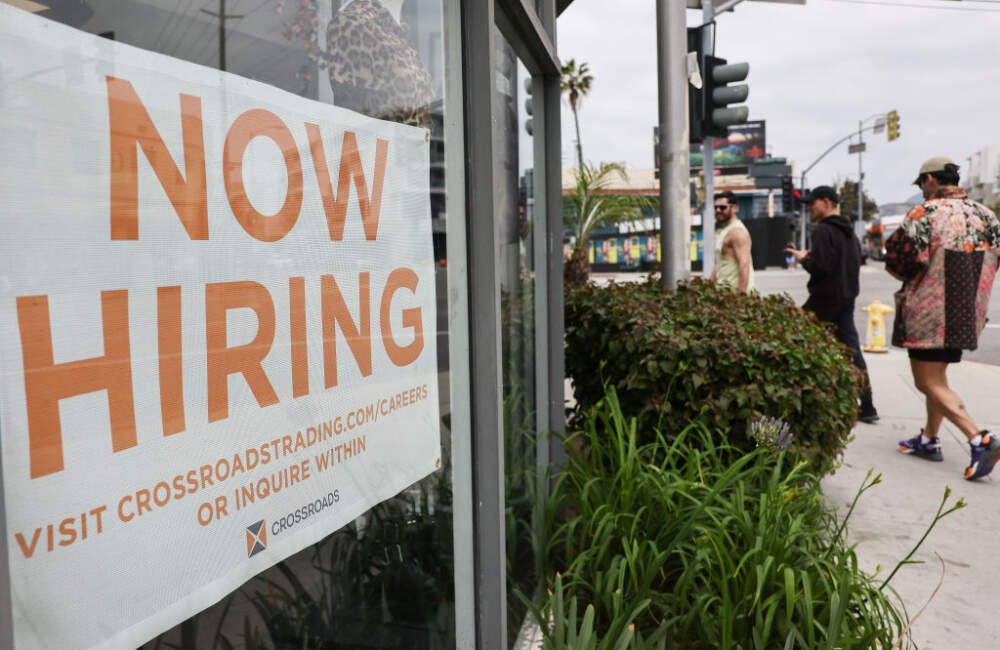The recent robust jobs report, showcasing a significant payroll increase of 353,000 last month, raises a crucial question: Why aren’t more Americans feeling the positive impact of a strong economy and labor market?
While there has been a perceptible improvement in people’s sentiments compared to the past couple of years, the overall consumer sentiment, as measured by a University of Michigan index, is still below its pre-pandemic level and slightly under its long-run average. January’s surge in consumer sentiment is attributed to easing inflation and rising incomes.
It’s essential to note that the impressive job gains in January were not an isolated occurrence. The job growth in November and December was revised upward by a total of 126,000, indicating an average monthly addition of 289,000 jobs since November. Despite a slight dip from the 399,000 monthly increase in 2022, the average of 255,000 new jobs per month last year remains robust.
So, what’s behind the disconnect between a thriving job market and the seemingly subdued sentiment among Americans?
Inflation emerges as a primary factor influencing public perception. While people appreciate headlines highlighting strong hiring, the adverse effects of inflation are keenly felt in their daily lives. According to John Leer, chief economist of Morning Consult, a research firm conducting monthly consumer confidence surveys, consumers strongly dislike inflation, and the tangible impact of high prices on their finances can overshadow positive job statistics.
While it’s true that inflation has been on a downward trend and wages have been rising sharply, the visibility of rising prices in everyday goods, such as gasoline and groceries, tends to overshadow the abstract concept of monthly job tallies. Despite wage growth outpacing inflation since spring 2021, the public’s perception takes time to adjust, especially as many prices remain elevated, if not decreasing.
A Treasury Department study indicates that total average pay increases have caught up with and surpassed total price gains since the mid-2021 inflation surge, providing Americans with more purchasing power. However, the slow reduction in prices, coupled with the persistence of higher costs, contributes to an ongoing negative sentiment.
Consumer confidence receives a boost from a record stock market, driven by expectations of Fed rate cuts, and relatively low gasoline prices. However, this positive outlook is primarily seen among higher-income Americans heavily invested in the stock market. In contrast, a substantial number of lower-income households are grappling with record credit card debt and elevated delinquencies. Despite income gains outpacing inflation for this group, the positive impact on sentiment takes time to materialize.
Additional factors dampening overall sentiment include high-interest rates and diminishing pandemic-related savings. While Fed officials have hinted at lowering interest rates as inflation decreases, the timeline for this remains uncertain, contributing to ongoing economic uncertainty.
Despite positive job market indicators, overall job growth has cooled over the past year. Fewer job openings and increased competition among candidates create challenges for job seekers. Additionally, while the recent jobs report showcased a notable addition of 353,000 jobs, this figure was influenced by seasonal adjustments related to fewer temporary holiday workers being hired, particularly in the retail sector.
Moreover, the psychological impact of news about layoffs tends to outweigh the positive effects of job gains. Recent announcements of layoffs by major companies contribute to an overall sense of instability among workers.
In summary, the disconnect between positive economic indicators and public sentiment can be attributed to the lingering effects of inflation, the slow adjustment of consumer perceptions to changing economic conditions, and the nuanced impact of factors like interest rates and job market dynamics. As the economy continues to evolve, the challenge lies in bridging this perceptual gap and ensuring that the positive momentum in job creation translates into tangible improvements in people’s lives.
